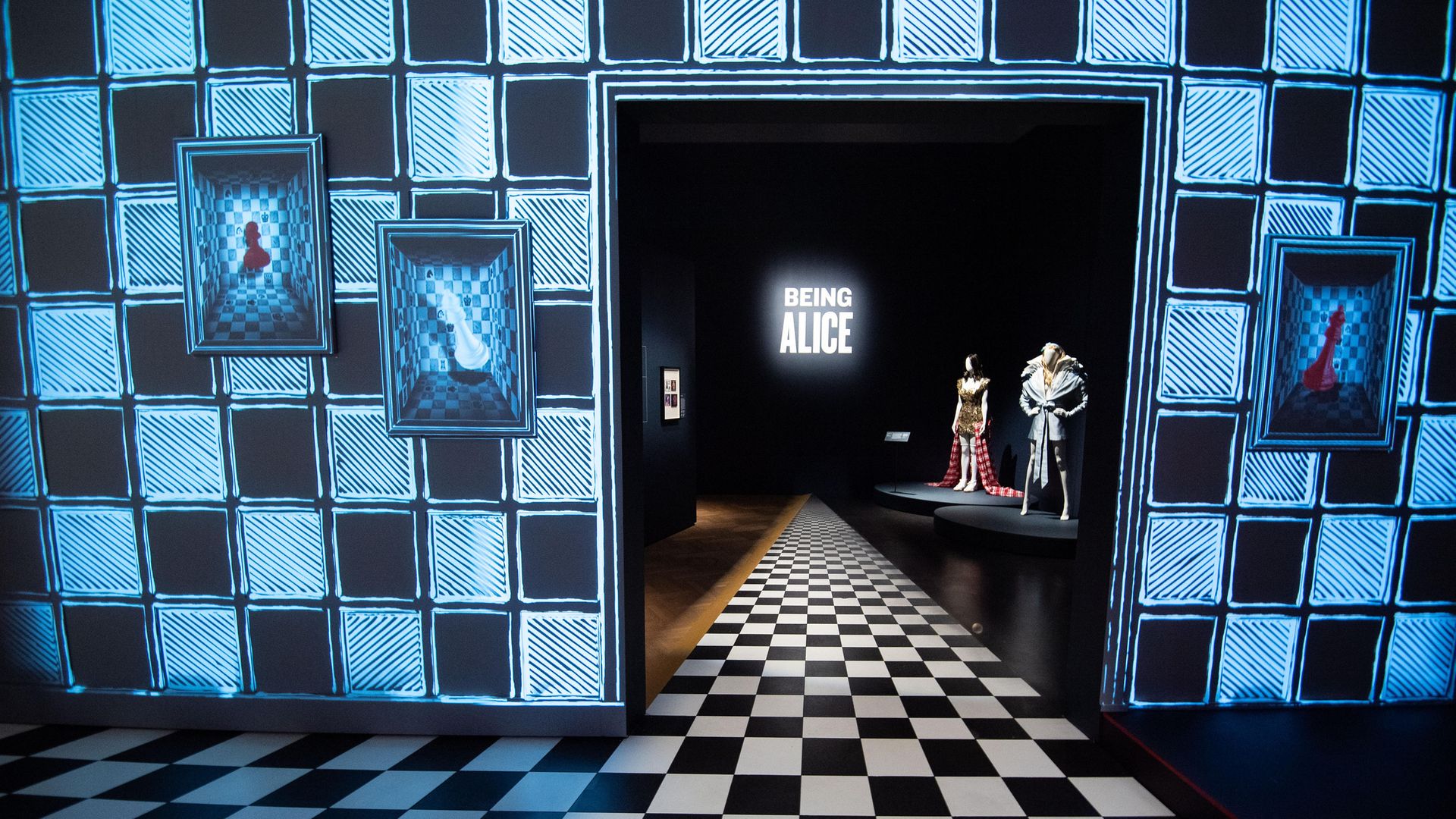
WILL SELF on the V&A’s new show: Alice: Curiouser and Curiouser
The front of my face felt heavy and swollen while a screed hovered in the mid-distance. “Grab a hedgehog and aim it towards one of the hoops.”
It read: “Don’t throw the hedgehog, just open your hand.” I tried doing this, but the hedgehog went high. I tried again with the same result – meanwhile, I began to notice that the Red Queen’s croquet match was being held in a courtyard that looked remarkably familiar.
I took a third hedgehog from the basket with one of my curiously immaterial hands – a hand I then opened and… yes! It shot through the croquet hoop which promptly collapsed. And suddenly the air around me was full of playing cards spontaneously arranging themselves into a house that ranged up and up.
Once I was completely surrounded another hovering screed told me that my adventure in Wonderland was over – but not before I’d recognised the courtyard: it was a simulation of the one surrounded by the very building I was sitting in: the V&A Museum in South Kensington.
I took the headset off, and right away found myself in surroundings no less wondrous than those Alice had experienced: I was in the virtual reality section of a new exhibition curated by Kate Bailey: Alice: Curiouser and Curiouser, that gathers together some of the myriad works inspired by Carroll’s masterpiece, together with material relating to both its creator and his child-muse, Alice Liddell.
As I wandered away I could see one of the gallery assistants sterilising my headset with a spray bottle, and placing the eye mask I’d been wearing in a flip-top bin. This resembled goggles made from the same material as the ubiquitous facemasks, and the same elasticated ear-loops – presumably the aim was to prevent any possible contamination by the pesky virus.
The exhibition is a triumph – mixing together real artefacts and artworks with some inspired tableaux vivants created with projectors. Even I, who am more in favour, generally, of museums that simply display stuff pretty much sans phrase, and tend to look askance at all such infotainment, was impressed by Bailey’s blend of artistry and artfulness, including simplified information plaques posted at child’s-eye-level. True, progress around the exhibition still follows the lazy S-bend route familiar from duty free shops at the major airports; there it’s so the flyers are exposed to as much merch’ as possible – whereas at the V&A it’s so the visitors can see the most exhibits, given the need to integrate static displays with such delights as a Mad Hatter’s tea table over which swarm dormice who must be on Dexedrine to counteract their species-wide narcolepsy.
Kate Bailey told me that the exhibition had originally been planned to open over a year ago – so she and her co-workers have had an elongated period of time within which to complete all these elegant arrangements. In a way, both the interruption in the exhibition’s mounting, and its subject matter, constitute a strange sort of meta-commentary of Carroll’s novel.
And novel it most certainly is – no mere ‘children’s book’; for all great works of literature transcend their genres, and Alice’s Adventures in Wonderland has drunk so deeply of the bottle marked ‘significance’ that it’s long since grown to a very great stature indeed. The Mad Hatter’s tea party, which never ends because its host has “murdered time”; the caucus race that has no true beginning or end, such that “all have won and all shall have prizes”; the very illimitable character of this subterranean realm itself, within which one indefinite place fades imperceptibly into the next; and most of all, the metamorphoses and alterations in scale that its protagonist is continually subject to, as if it were by these means alone that she can make any progress – all these are surely reflections of the era Carroll lived in, one typified by the impact of new theories concerning the material world, and new technologies of specularity and velocity.
A keen amateur photographer as well as a mathematician, Carroll’s ‘Alice’ is full of the conundrums forced on the human psyche not by the murdering of time – but its murdering of psychological duration: the introduction of universal ‘railway time’ being an imposition of collective clock-watching on an entire population who hitherto had been as dreamy as dormice, and as ignorant of their own appearance as sisters raised in a treacle well. The Virgil that leads Alice on is one such clock-watcher: forever checking his half-hunter and inveighing against his own tardiness.
But if the mid-Victorian era was when people’s lives began to inexorably accelerate – our own recent past has been typified by a massive slowdown; this and our collective submerging in another sort of ulterior realm: that constituted by virtuality itself. On Zoom calls and social media feeds our own size and that of our thoughts does indeed fluctuate rapidly, while one hazily defined – but for all that compelling – space, also fades imperceptibly into the next. The Red Queen, famously, could believe six impossible things before breakfast, so I doubt she – or her creator for that matter – would find VR that magical.
What do you think? Have your say on this and more by emailing letters@theneweuropean.co.uk
Warning: Illegal string offset 'link_id' in /mnt/storage/stage/www/wp-includes/bookmark.php on line 357
Notice: Trying to get property 'link_id' of non-object in /mnt/storage/stage/www/wp-includes/bookmark.php on line 37







